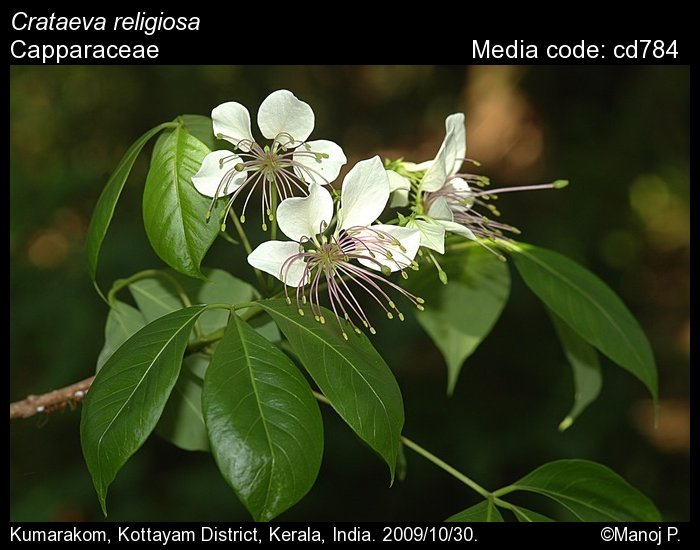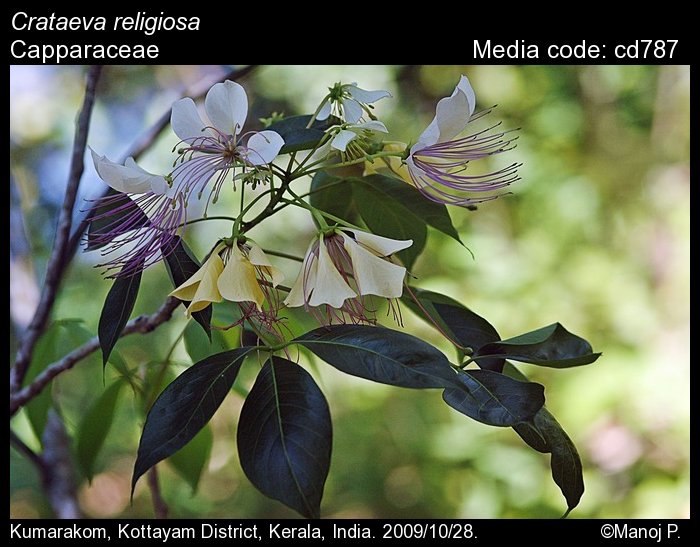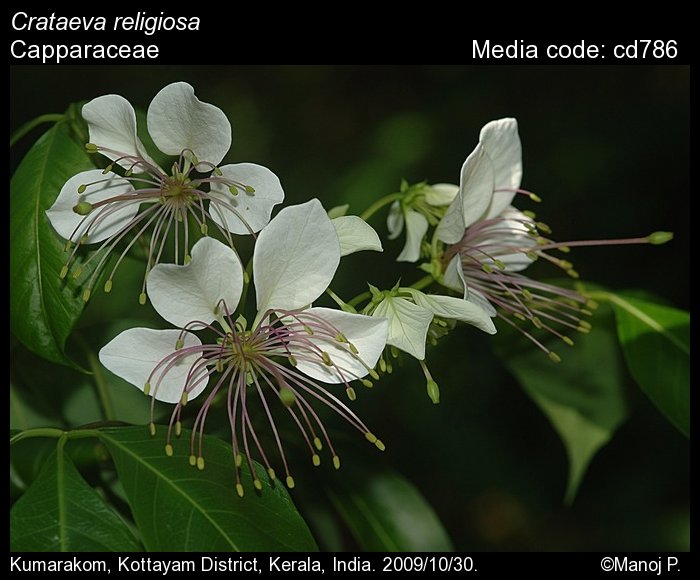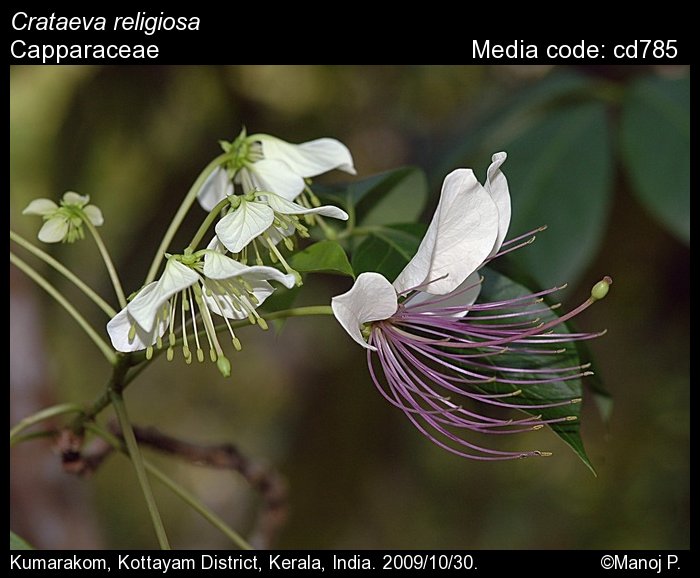
Larval Host Plant
Appias albina – Common Albatross
Appias libythea – Western Striped Albatross
Appias lyncida – Chocolate Albatross
Hebomoia glaucippe – Great Orange-tip
Leptosia nina – Psyche
Other notes
Natural Hostory: A medium-sized, deciduous tree growing 15m tall. It is native to subtropical evergreen forests of Asia, often found growing along streams and temples. Leaves are trifoliate and falls off during summer. Flowers are creamy white with purple filaments, borne in clusters on branch ends during February to June. Fruits are ovoid hard berries. Numerous kidney-shaped seeds are embedded in the creamy pulp. Both flowers and fruits gives out an garlic-like, unpleasant odor (Srinivas et al., 2018).
References:
Nitin, R., V. C. Balakrishnan, P. V. Churi, S. Kalesh, S. Prakash, and K. Kunte. 2018. Larval host plants of the butterflies of the Western Ghats, India. Journal of Threatened Taxa, 10:11495–11550. DOI: https://doi.org/10.11609/jott.3104.10.4.11495-11550.
WFO (2022): World Flora Online. Accessed on 31 Dec 2022. URL: http://www.worldfloraonline.org/taxon/wfo-0000625724.
Srinivas, V., Surendra, G., Anjana, M., & Kiran, A. S. (2018). A Scientific review on Crateva religiosa.
Jacobs, M. (1964). The genus Crateva (Capparaceae). Blumea: Biodiversity, Evolution and Biogeography of Plants, 12(2), 177–208.
Page citation
Kawthankar, N. 2024. Crateva religiosa G.Forst. – Sacred Garlic Pear. In Kunte, K., S. Sondhi, and P. Roy (Chief Editors). Butterflies of India, v. 4.12. Published by the Indian Foundation for Butterflies. URL: https://odonata.ncbs.res.in/crateva-religiosa, accessed 2024/10/02.


